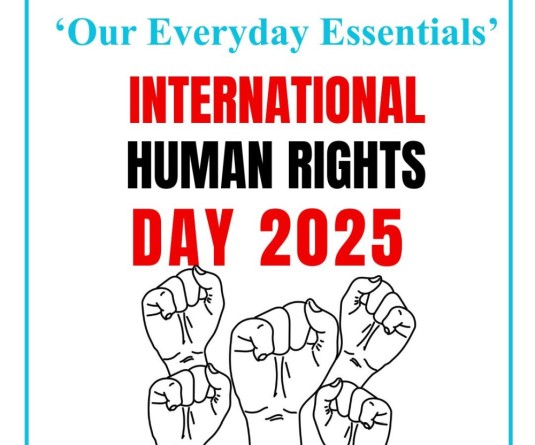Rev Lanu Longchar at his residence in Mokokchung. (Morung Photo)
Down memory lane with Rev Lanu Longchar: On the 60s Naga Christianity
Morung Express Feature
Mokokchung | August 18
In a state which has been declared “Nagaland for Christ”, with a population mostly following Christianity, a preacher in the stature of Rev Lanu Longchar wouldn’t come as a stranger for many people. He is considered to be one of the most gifted speakers, bringing the word of God to many.
However, a glimpse into the early life of this seventy-five years old preacher reveals a timeless tale of hardship and trouble amidst ‘great happiness after being saved through the grace of God’ in the most unlikely of places – a Jail. And his journey of serving God from the early sixties, during the heights of the Naga insurgency movement, reflects a time of the Nagas’ Christianity that cannot be imagined nor simply understood.
“It was 1956, 11 march in Shillong Jail,” said the soft-spoken Rev Lanu Longchar to journalists who paid an informal visit. “Twenty three of us, Naga students were arrested on suspicion. It was my third arrest, and I was studying in Shillong at that time. I was frustrated…”
Then two white missionaries came and asked the jail authorities to have a counseling with the prisoners; while his other friends said ‘no’, young Lanu Longchar (then a Class-X student) agreed to listen. With handcuffs on his wrist, the two missionaries preached and slowly a transformation in the heart of young Lanu Longchar came about; he wept, he confessed for about fourteen minutes and his life changed forever.
“I bowed down and said, ‘Thank you Lord for this handcuffs’,” said Rev Longchar. Later, he was transferred to Kohima jail, then to Nawgaon (Assam) and back to Kohima jail, where he was released ‘unconditionally’. “When I was in jail, we used to have prayer meetings and that really helped (me) a lot,” he says. After his release from the jail, he went back to his native Longkhum village in Mokokchung. But it was a different sight.
“Except for Ungma or Changki villages, all the Ao villages were burnt down (by the Indian army). People were living in the jungles,” said the Reverend. “It (what the Indian army did) was an intolerable sin.” He said to have missed a chance to go to England with the then NNC president AZ Phizo, due to ill health. That same year in 1956, he was elected the president of the Naga Youth Movement at a conference held in Waromung (Mokokchung) and was appointed the “accountant general” and “foreign corresponding officer” of NNC.
“But there was a longing in my heart to study theology, and I got a chance to come over ground,” Longchar said. He studied in Calcutta Bible College, Union Bible Seminary Yeotmal, Baptist Theological College, New South Wales Australia and Haggai Institute of Evangelism in Singapore. He was then appointed ‘youth worker’ under the Ao Baptist Arogo Mungdang in 1965. But serving God during the time was not as easy as one would like to think now.
The second revival
“There was a genuine feeling among the people. People were very fearful. The villagers took the church bell with them to the jungle, and in the evening, they would ring the bell and have prayer meetings,” said Rev Lanu, “The hope was big, they believed in God. There was a living hope. In the jungle, there was no doctor, so there were many instances where people were healed through their faith.”
There were no buses and they had to travel by foot through thick jungles. “We used to travel by foot, carrying ‘jirak’ (a bamboo lamp filled with kerosene and kindled by a cotton wick). But the villages we visited were so hospitable. We used to sleep by the fireplaces. And the villagers would sing the whole night. And when we left they would drop us till the village gate all the while singing songs,” a nostalgic Rev Lanu recollected.
“Despite everything, it was so beautiful; the villagers, their yearning to listen to the word of God, the baptism and the salvation of the people. That time hope and faith among the people was so great.”
He said of a time in 1971 in Tuensang, where he along with some preachers preached in Tuensang village. At that time there were only 200 believers in the village; but after days of preaching, the villagers surrendered 864 skulls and buried them after seeking God’s forgiveness. Within a span of one week, seven hundred people were baptized. “That was the beginning of the second revival movement in Nagaland,” he said with deep happiness.
Comparing the past and the present, Rev Lanu Longchar lamented that in today’s society “there are too many preachers, but not many soul-winners”. “The churches and leaders must humble themselves before God,” he said. “My heartache is that there is not many soul-winning.”
Need for Jesus in Naga Church
Being a preacher who has been involved in the youth ministry for a long time, Rev Lanu Longchar said many youths are ‘hungry for the word of God.’ If ‘right approach’ is taken by the churches, many youths would be transformed through the power of God, he explained. The right approach, he said, is to ‘introduce’ Jesus Christ into the churches and school institutions so through the power of God youths would be transformed and thus would keep away from corrupt political ideas, HIV/AIDS, drugs, robbery etc.
Taking an example from his own life, Rev Lanu Longchar urged everyone to have a testimony of their own. “Unless we have (a) testimony, we are meaningless,” he added. At present, Rev Lanu Longchar is still active in church ministry. He is the president of the International Evangelistic Fellowship (IEF). He still travels widely, teaching and preaching the word of God in Nagaland, India and abroad.



.jpg)


